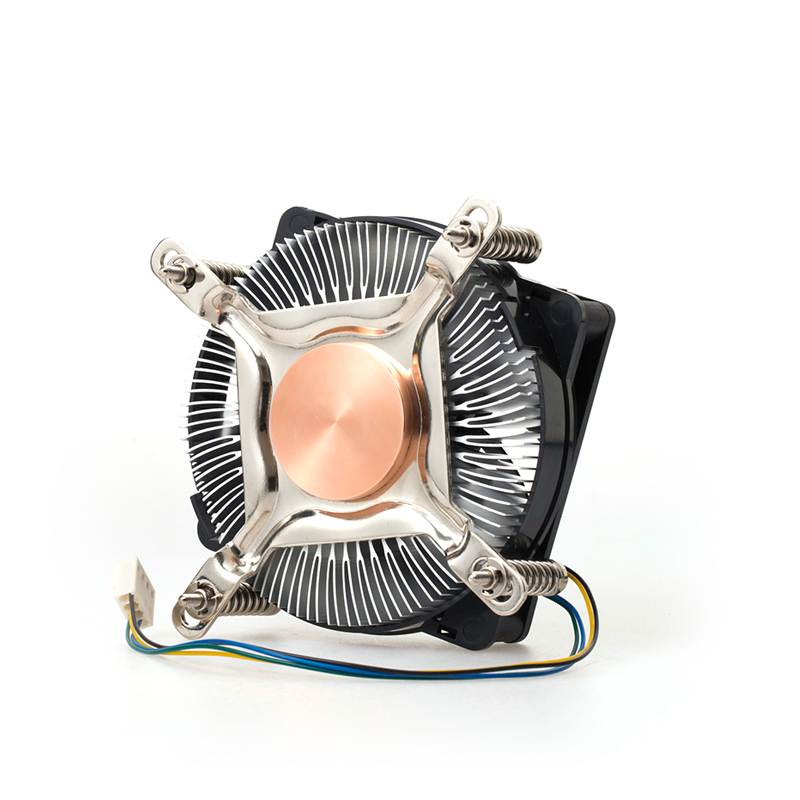

Views: 53 Author: Site Editor Publish Time: 2022-12-10 Origin: Site
A computer's CPU (Central Processing Unit) often tends to overheat because some of its components overheat and pose a risk to the entire computer's functioning. And to ensure that the CPU is in good working condition for a long time, the CPU heat sink component is created.
In this article, we will introduce you to a CPU heat sink and how it works.
A CPU heat sink is a piece of metal that sits on top of a computer chip, such as a CPU, and rises through a series of heat sinks, thus drawing energy from the component.
By themselves, heat sinks are passive, which means they have no moving parts. However, in most cases, heat sinks are used in combination with fans that blow hot air away or liquid cooling solutions that carry heat midway through the ducts.

CPUs tend to overheat because some of their components generate heat. Without a heat sink, the heat generated by the components can remain in your CPU, which can burn or fry it.
Since most components are made of electronic chips, they can easily absorb heat. If they receive too much heat, they can become damaged and, therefore, unusable, posing a risk to the functionality of your high-performance computer.
A heat sink is crucial because it helps cool your CPU, even if you use it for long periods. It is designed to absorb the CPU's heat and dissipate it from its components. Heat dissipation is possible because the heatsink has fins, which provide more surface area in the heat transfer process.
The heat sink must be close to the heat source to maximize cooling. Heat sinks use heat conductors to transfer heat into the fins with a larger surface area, thus spreading the heat throughout the computer.
A heat sink removes heat from a component through four basic steps.
1. Heat source: Any system that generates heat and needs to be removed to operate.
2. Heat Transfer from the Source: Heat enters the radiator and moves away from the source by natural conduction, which is directly influenced by the thermal conductivity of the radiator material. This is possible due to the high thermal conductivity materials in the radiator, such as copper and aluminum.
3. Heat is distributed throughout the radiator: Heat naturally travels throughout the radiator by natural conduction, moving across the thermal gradient from the high-temperature environment to the low-temperature environment. This means that the radiator will typically be hotter near the source and heat sink near the end of the radiator.
4. Heat moves away from the radiator: This process depends on the radiator's temperature gradient and its working fluid - most often air or a non-conductive fluid.
- The working fluid travels across the warm radiator surface and uses heat diffusion and convection to transfer heat from the surface to the surroundings.
- This depends on the temperature gradient, so if the ambient temperature is not lower than the radiator, convection and subsequent heat dissipation will not occur.
- The total surface area of the heat sink becomes beneficial because a large surface area provides a larger area for heat diffusion and convection to occur.

There are three types of radiators: passive, active, and hybrid.
Passive radiators rely on natural convection, which means that the ability of hot air to float results in airflow over the radiator, and they do not require an auxiliary power supply or control system to dissipate heat. However, passive radiators are less effective than active radiators in dissipating heat from the system.
Active radiators use forced air - usually generated by the movement of fans, blowers, or even entire objects - to increase fluid flow through a hot area.
This is like the fan in your computer that turns on when your computer gets hot. The fan forces air through the radiator, thus allowing more unheated air to pass over the radiator surface. This increases the total thermal gradient across the radiator, allowing more heat to escape.
Hybrid radiators combine the characteristics of both passive and active radiators. These configurations are less common and typically use a control system to cool the system based on temperature requirements.
The forced air source is inactive when the system operates at a heat sink level and only passively cools the system. Once the source reaches a higher temperature, the active cooling mechanism increases the cooling capacity of the sink.

Thermal paste compound - also known as thermal paste, thermal compound, CPU grease, thermal paste, heatsink paste, and thermal interface material - is a sticky paste used as an interface between the CPU heatsink and the heat source.
Heatsink compounds fill the gap between the CPU or other heat-generating components and the mechanical heatsink. The mechanical heat sink is located above the CPU. Heat is absorbed from the CPU to its heatsink through the mechanical heatsink, and a fan blows air across it to dissipate the excess heat.
Heat sinks play a key role in dissipating heat from the CPU and avoiding overheating, protecting the physical surfaces of critical components. If the CPU overheats, the computer's functionality is compromised, hindering performance when and where it matters most. So even if you have a great CPU to fully function, you still need a quality CPU heat sink for it to work, and the two of them are indivisible. So if a computer can't live without a CPU, then a computer general can't live without a CPU heat sink.